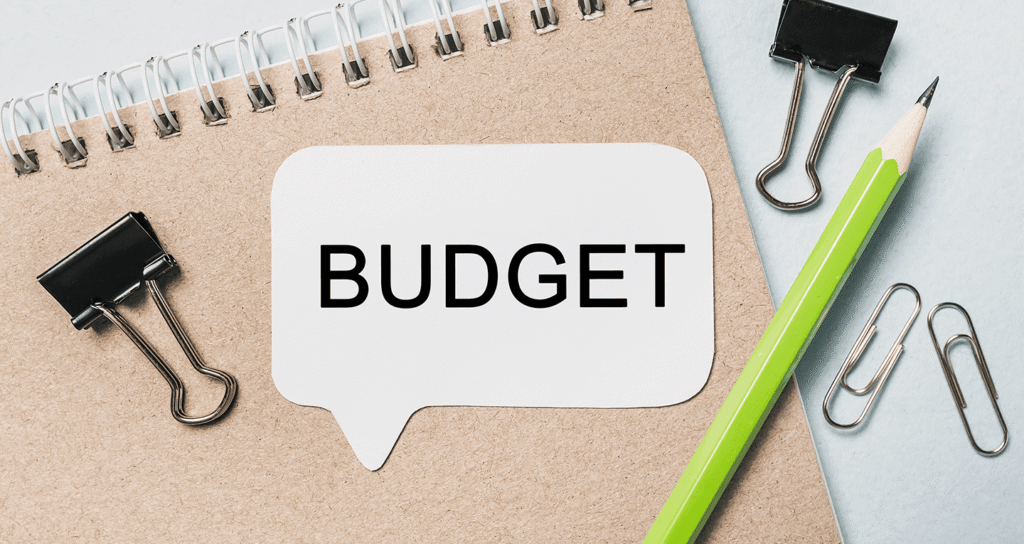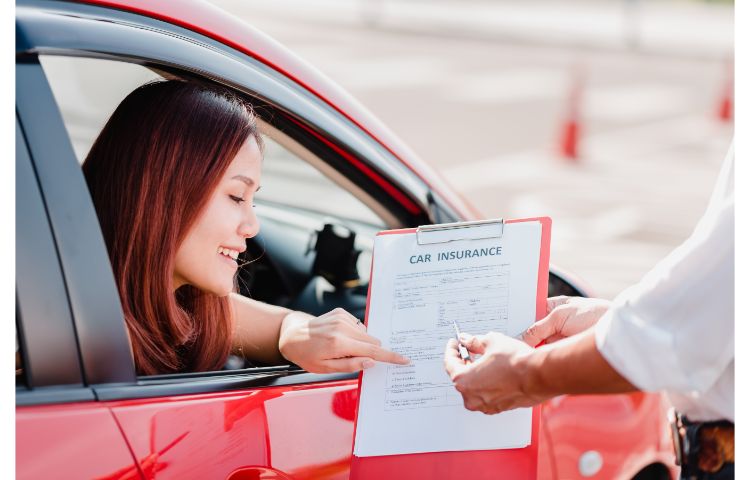In today’s world, car insurance is essential for every driver. Whether you’re buying a new car or renewing an existing policy, finding the right car insurance can save you a significant amount of money while providing the protection you need. However, with so many options available, comparing car insurance quotes the right way can seem overwhelming. It’s easy to get lost in the sea of offers, jargon, and different pricing structures. This article will guide you step-by-step on how to compare car insurance quotes in a smart and effective way.
Key Takeaways
- Compare at least three quotes to find the best coverage and price.
- Don’t just focus on price—evaluate the coverage and terms carefully.
- Check for discounts that may apply to your policy.
- Research the insurer’s reputation for customer service and claims handling.
- Read the fine print to understand the policy exclusions and limitations.
The Importance of Comparing Car Insurance Quotes
Before diving into the process of comparing car insurance quotes, it’s essential to understand why this is crucial. Car insurance is often one of the largest ongoing expenses for vehicle owners, and finding the right policy can significantly affect your financial situation.
The main reason for comparing car insurance quotes is to ensure that you’re getting the best value for your money. The lowest price isn’t always the best choice, and understanding the coverage you’re getting for the premium you pay is vital. By comparing quotes, you can ensure that your policy provides the right amount of coverage for your needs and budget. Plus, with the right tools and information, you can often find discounts that lower your premium while maintaining comprehensive coverage.
Step-by-Step Guide to Comparing Car Insurance Quotes

Before diving into price comparisons or picking the first policy you find online, it’s crucial to first assess what kind of car insurance coverage you actually need. Car insurance is not a one-size-fits-all product. Every driver has different risks, budgets, and priorities. Understanding your needs ensures you’re not underinsured or overpaying for unnecessary coverage.
Here’s how to break it down thoroughly:
Your Vehicle Type
The kind of car you drive has a major impact on what type and amount of insurance you should carry.
- New Vehicles: A new or leased car often requires full coverage, including comprehensive and collision coverage, to protect against theft, damage, and accidents. Lenders may also require this if your car is financed.
- Luxury or High-Performance Cars: These vehicles usually have higher repair and replacement costs, so insurers charge more. You’ll also want increased liability coverage and possibly gap insurance (to cover the difference between the loan amount and car value in a total loss).
- Older Vehicles: If your car’s value is low, paying for comprehensive or collision coverage may not be cost-effective. A liability-only policy might be sufficient.
- Electric or Hybrid Cars: These vehicles sometimes qualify for special discounts, but their parts may be more expensive to replace. Consider enhanced coverage.
Your Driving History
Your past driving behavior is a strong predictor of your risk — and insurance needs.
- Clean Record: If you’ve had no accidents or violations, you’re considered low-risk and may qualify for lower premiums or good driver discounts. A basic but adequate policy might suit you.
- History of Accidents or Violations: If you have speeding tickets, DUIs, or previous claims, insurers may view you as high-risk. You may need SR-22 insurance (in some states), and you’ll benefit from broader coverage to protect against future incidents.
- New or Young Drivers: Teenagers or new drivers have little to no history and are often charged higher rates. Consider policies that offer accident forgiveness, driver monitoring discounts, or training program incentives.
State or Regional Laws
Auto insurance is regulated at the state level, which means requirements vary widely depending on where you live.
- Minimum Legal Requirements: Every state mandates minimum levels of liability coverage for bodily injury and property damage. However, these minimums are often not enough to fully protect you in a serious accident.
- No-Fault States: In states like Florida, Michigan, or New York, personal injury protection (PIP) is mandatory, and each driver claims from their own insurance regardless of fault.
- Uninsured Motorist Requirements: Some states require uninsured/underinsured motorist coverage, protecting you if you’re hit by a driver with insufficient insurance.
- Weather or Risk-Based Needs: If you live in areas prone to flooding, hail, wildfires, or theft, consider comprehensive coverage even if it’s not required.
Your Budget

Understanding how much you can realistically spend on insurance is essential. Balance affordability with adequate protection.
- Monthly vs. Annual Premiums: While monthly payments are more manageable, many insurers offer discounts for paying annually or semi-annually.
- Deductibles: Choosing a higher deductible can lower your premium, but it means you’ll pay more out-of-pocket if you file a claim. If you can’t comfortably afford the deductible, choose a lower one.
- Bundling Options: If you have renters, homeowners, or life insurance, bundling policies with the same provider can offer savings.
- Usage-Based Discounts: Some insurers offer telematics programs that track your driving behavior — good drivers often receive substantial discounts.
Your Driving Habits and Usage
How, when, and how often you use your car can help determine the ideal policy.
- Daily Commuters: If you drive a long distance daily, your exposure to risk increases, and you may want more robust coverage. Mileage-based pricing may not suit you.
- Occasional Drivers: If you only drive occasionally, you could benefit from usage-based or pay-per-mile insurance policies.
- Business Use: If you use your car for work (e.g., delivery, rideshare, real estate), a commercial auto policy or business-use endorsement may be required.
- Long Trips or Road Travel: If you frequently travel long distances or cross state lines, check if your policy offers nationwide or roadside assistance, towing, and rental reimbursement coverage.
By knowing your needs, you can narrow down the kind of coverage that’s best for you—whether it’s basic liability coverage or a more comprehensive package with collision and comprehensive protection.
Gather Multiple Quotes
| Aspect | What to Look For | Why It Matters |
|---|---|---|
| Coverage Options | Liability, collision, comprehensive, uninsured motorist, medical payments, personal injury protection | Ensures all quotes offer comparable protection based on your specific needs |
| Deductibles | Amount you pay out of pocket before insurance kicks in | Affects your monthly premium and claim costs; higher deductibles often mean lower premiums |
| Premium Cost | Monthly, semi-annual, or annual price for the same level of coverage | Helps you find the best deal without sacrificing necessary protection |
| Discounts Offered | Bundling, good driver, student, low mileage, safety features | Reduces your premium and adds extra value to the policy |
| Customer Service | Availability, responsiveness, reviews, local agents | Ensures you can get help easily when needed; critical during emergencies or claim processes |
Once you know what type of coverage you need, the next step is to gather multiple quotes from different insurance companies. This can be done through various methods:
- Online Comparison Websites: Platforms like Compare.com, NerdWallet, or The Zebra allow you to enter your information once and receive quotes from multiple insurance providers.
- Direct Quotes from Insurers: Many insurance companies offer online quote forms where you can receive an instant quote.
- Insurance Agents: If you prefer a more personalized approach, contacting an insurance agent can help you get tailored quotes, especially if your situation is unique.
By collecting multiple quotes, you increase your chances of finding a competitive price for the coverage you need.
Look at Coverage Types, Not Just Price
When comparing quotes, it’s essential to not focus solely on the price. A low price can sometimes mean you’re getting less coverage or higher deductibles. Here are some of the common types of car insurance coverage to consider:
- Liability Coverage: This covers damages to another driver’s car and medical expenses if you’re found at fault in an accident.
- Collision Coverage: Pays for damage to your own car if you’re in an accident.
- Comprehensive Coverage: Covers damage to your vehicle not involving a collision, such as theft, vandalism, or weather-related damage.
- Uninsured/Underinsured Motorist Coverage: Protects you if you’re in an accident caused by a driver with insufficient or no insurance.
- Personal Injury Protection (PIP): Covers medical expenses for you and your passengers after an accident.
Ensure that the quote you are comparing includes the coverage you need, and don’t hesitate to adjust the levels of coverage to suit your needs. For instance, if you’re willing to accept higher deductibles, it might lower your monthly premium.
Check for Discounts
Many insurance companies offer various discounts that can significantly lower your premium. These discounts may vary by provider, but here are some common ones to look out for:
- Safe Driver Discounts: If you have a clean driving record, you might be eligible for a safe driver discount.
- Bundling Discounts: If you have other insurance policies, such as home insurance, you may be able to bundle them together for a discount.
- Anti-Theft Device Discounts: Having an anti-theft device installed in your car can lower your insurance premium.
- Good Student Discount: Some insurers offer discounts to students who maintain good grades.
- Low Mileage Discounts: If you don’t drive much, you may qualify for a low-mileage discount.
Ensure you ask about any discounts the insurance company might offer so you don’t miss out on potential savings.
Consider the Insurer’s Reputation and Customer Service
When comparing car insurance quotes, it’s easy to get focused on price and coverage alone. But even the best policy on paper can fall short if the insurance company has poor customer service or a frustrating claims process. That’s why evaluating the insurer’s reputation and service quality is just as important as understanding deductibles and premiums.
This step ensures that when an accident or emergency occurs, you’re not just financially covered — you’re also supported by a trustworthy and responsive company.
Financial Stability
A financially stable insurer can meet its obligations, especially during large-scale disasters or a high volume of claims. Imagine filing a claim during a natural disaster and learning your insurer can’t pay because they’re financially strained.
How to Evaluate Financial Stability:
- A.M. Best: Specializes in insurance industry ratings. Look for an A or higher rating.
- Standard & Poor’s (S&P): Rates financial strength across industries. Ratings like A, AA, or AAA are solid.
- Moody’s: Uses a letter grading system; A1 or better indicates strong financial health.
- Fitch Ratings: Also used to gauge financial stability. A rating of A or higher is generally considered safe.
Customer Reviews and Reputation

Customer reviews provide a snapshot of real experiences — from purchasing a policy to filing a claim. While no company will have a perfect score, patterns in feedback can reveal strengths or recurring problems.
Where to Check:
- Trustpilot: Offers verified reviews, often with detailed comments.
- Google Reviews: Provides customer feedback on local insurance agents and regional offices.
- Better Business Bureau (BBB): Lists customer complaints and resolutions. A BBB-accredited company generally meets quality standards.
- Consumer Reports: Independent and reliable reviews based on surveys of thousands of policyholders.
- JD Power: Publishes an annual Auto Insurance Study ranking insurers by region for satisfaction, billing, claims, and service.
What to Look For in Reviews:
- Timeliness and fairness in handling claims
- Helpfulness of customer service reps
- Ease of reaching a live agent
- Transparency in billing and policy terms
- Overall customer satisfaction and loyalty
Be wary of companies with frequent complaints about delayed payments, denied claims, or unresponsive service.
Claims Process
The ultimate test of an insurance company is how it handles claims. A fast, fair, and transparent claims process can make a stressful situation — like a car accident — much more manageable.
Key Considerations:
- Ease of Filing: Can you file online, via a mobile app, or do you have to call or email? Some modern insurers offer photo-based claim tools and quick digital submissions.
- Response Time: How quickly do adjusters respond? Are claims settled within days or weeks?
- Payout Speed: Is reimbursement quick, or do customers report long delays?
- Claims Support: Do you have a dedicated claims adjuster or representative to guide you through the process?
Many insurance companies now feature claims satisfaction guarantees — a good sign of their commitment to service.
Quality of Customer Service
Even before a claim, customer service is essential for answering questions, updating policies, and resolving concerns.
What to Evaluate:
- Accessibility: Does the insurer offer 24/7 support via phone, chat, or app?
- Communication: Are representatives helpful, courteous, and knowledgeable?
- Agent Support: If you prefer face-to-face interactions, is there a local agent or office nearby?
- Digital Tools: Does the company offer a user-friendly website or mobile app for managing your policy, billing, and claims?
Excellent customer service can help you better understand your policy, identify cost-saving opportunities, and ensure you’re never in the dark about your coverage.
Review the Terms and Conditions
Once you’ve narrowed down your quotes, it’s essential to carefully read through the policy terms and conditions. The fine print can reveal exclusions, limitations, and requirements that could affect your coverage.
Key things to check include:
- Exclusions: What is not covered by the policy? For instance, some policies may not cover certain natural disasters or types of accidents.
- Deductibles: What amount will you need to pay out-of-pocket in the event of a claim?
- Policy Limits: What is the maximum amount the insurance company will pay for a claim? Ensure it’s sufficient for your needs.
- Payment Terms: Check how frequently you’ll be billed and if there are any fees for making payments on a specific schedule.
Make Your Decision and Finalize Your Policy
Once you’ve compared the quotes and carefully reviewed the terms and conditions, it’s time to make your decision. Choose the policy that offers the best balance of price, coverage, and service. After making your decision, contact the insurance company to finalize your policy.
Also Read :-What Are The Best Jobs You Can Get with An MBA?
Conclusion
Comparing car insurance quotes the right way can save you time, money, and stress. By following the steps outlined in this article—understanding your needs, gathering quotes, evaluating coverage, checking for discounts, researching the insurer’s reputation, reviewing terms, and making an informed decision—you can confidently find the best policy for your car.
Remember, while price is important, it shouldn’t be the sole factor in your decision. Look at the overall value the insurer offers, including coverage, customer service, and financial stability.
FAQs
- What is the best time to compare car insurance quotes?
- The best time to compare quotes is when you’re renewing your policy or purchasing a new car. It’s also a good idea to compare annually to ensure you’re getting the best deal.
- How often should I compare car insurance quotes?
- It’s recommended to compare your car insurance quotes annually or after significant life events such as moving, getting a new vehicle, or changes in your driving habits.
- Can I compare car insurance quotes without affecting my credit score?
- Yes, comparing car insurance quotes typically does not affect your credit score. However, some insurers may do a soft inquiry to assess your risk, but it’s not the same as a hard credit check.
- What factors influence my car insurance premium?
- Factors like your driving history, age, location, vehicle type, and coverage level all influence your premium.
- Can I change my car insurance provider at any time?
- Yes, you can change providers at any time, but be aware of cancellation fees or potential gaps in coverage if you switch mid-policy.
- Why are car insurance quotes so different?
- Different insurers use varying methods to assess risk, which affects their pricing. Factors like claims history, vehicle type, and location all play a role.
- Do I need to compare quotes from every insurer?
- It’s not necessary to compare quotes from every insurer, but it’s good practice to check several to ensure you’re getting competitive pricing and the best coverage for your needs.


